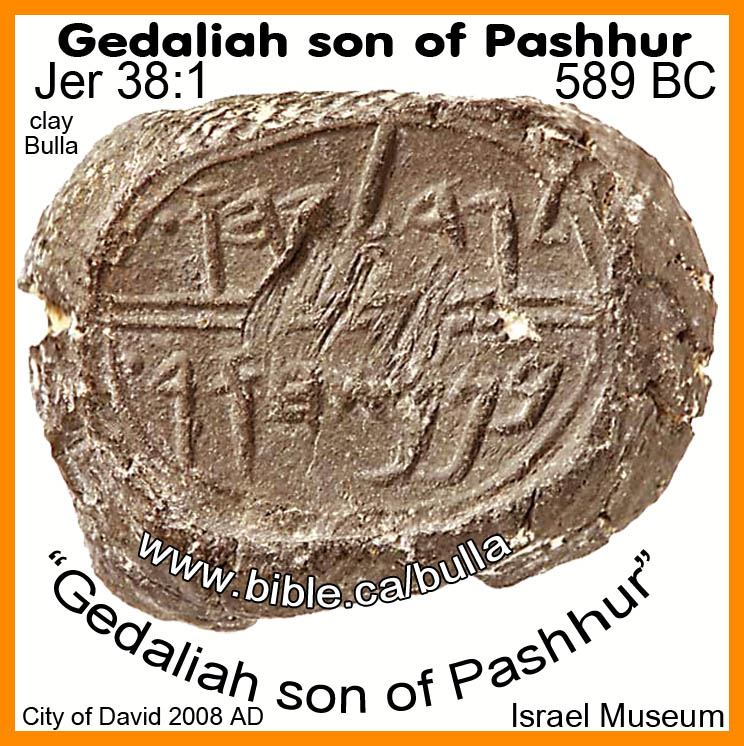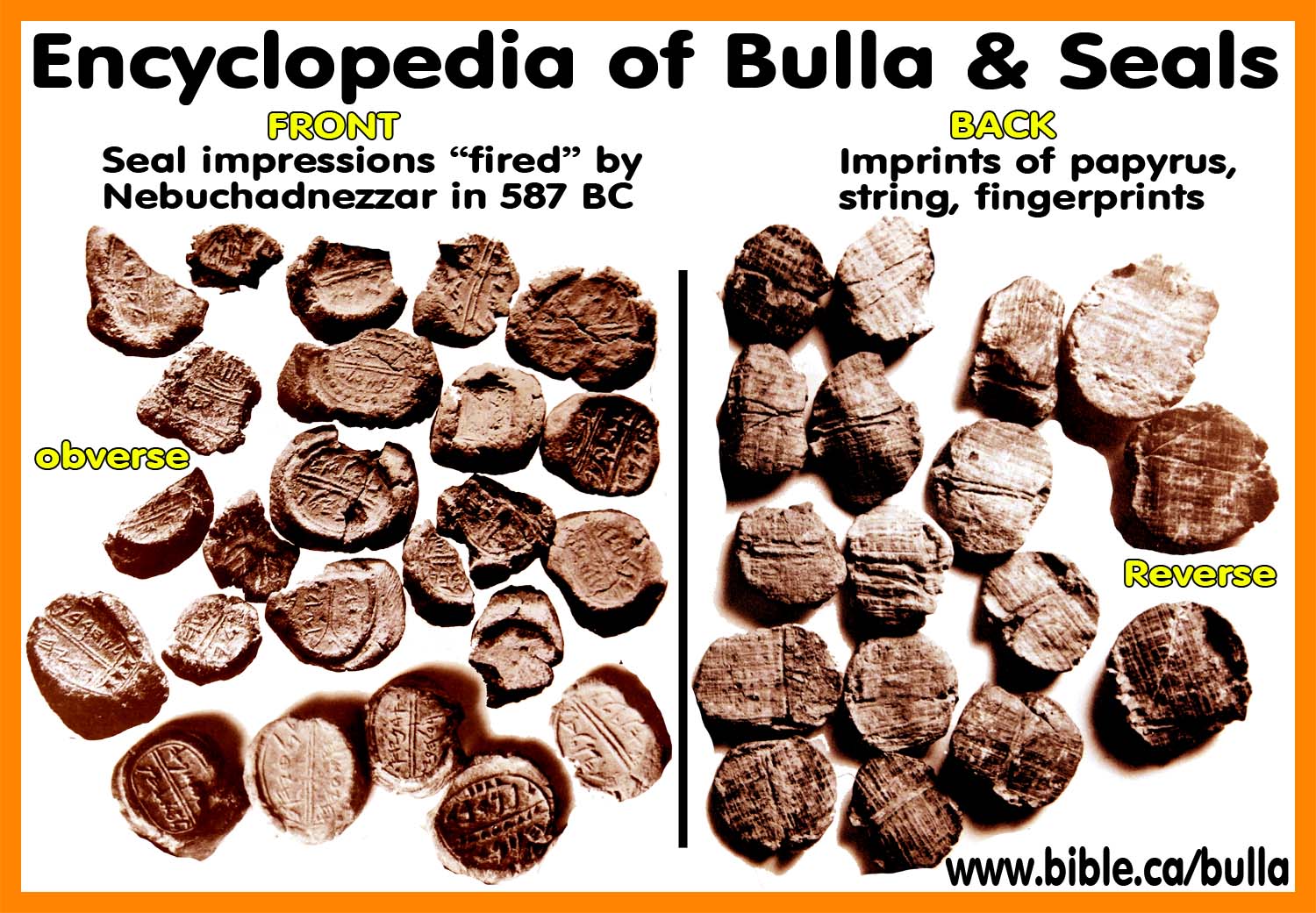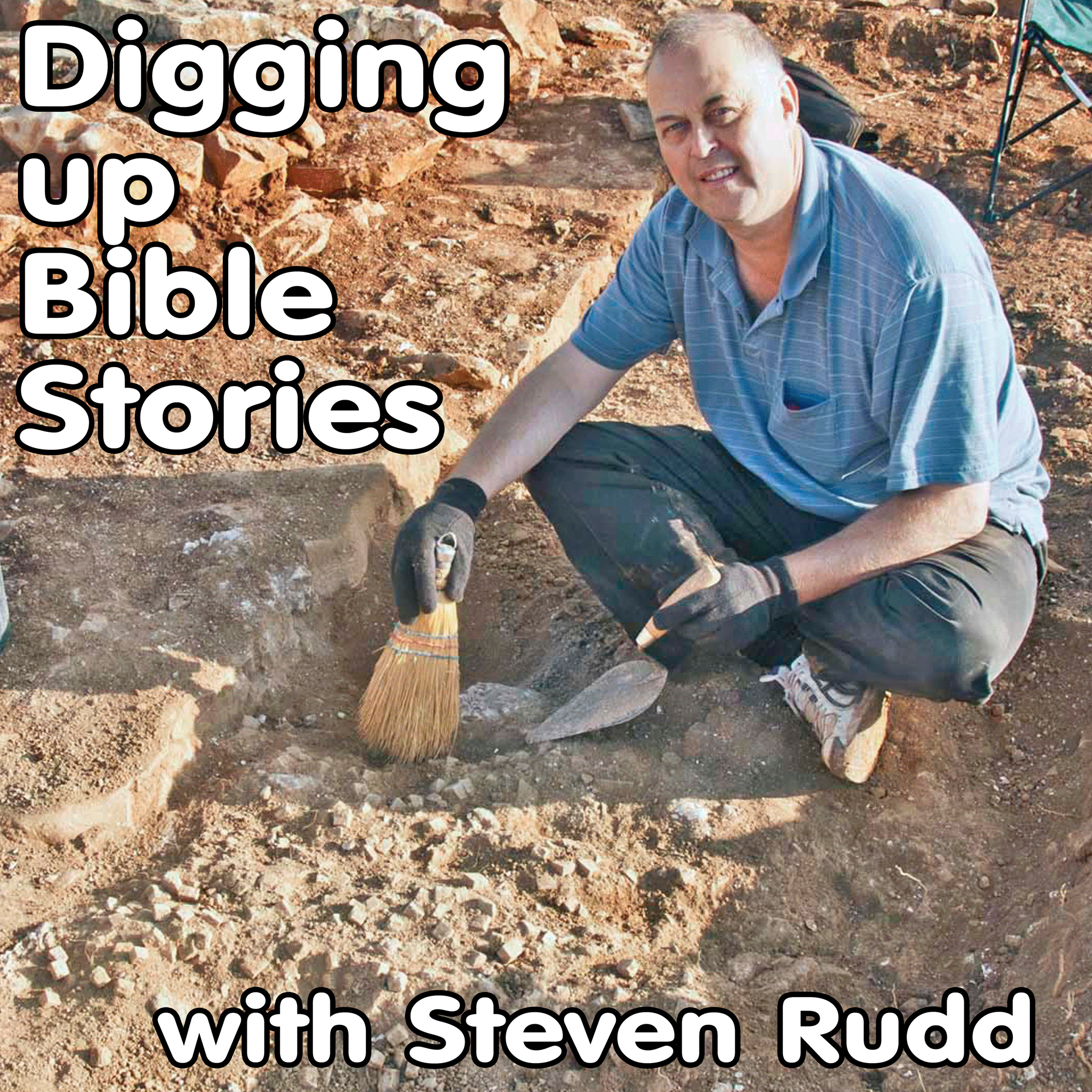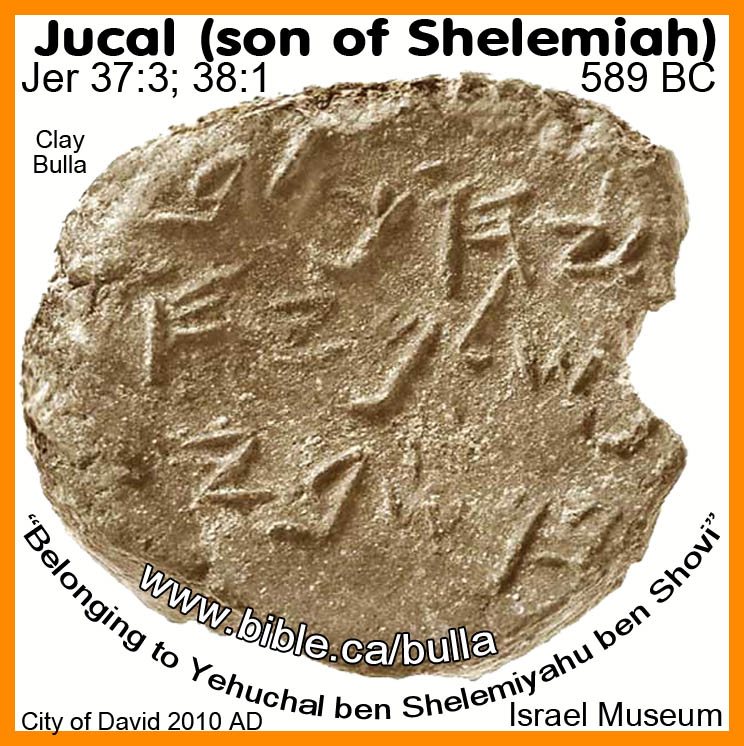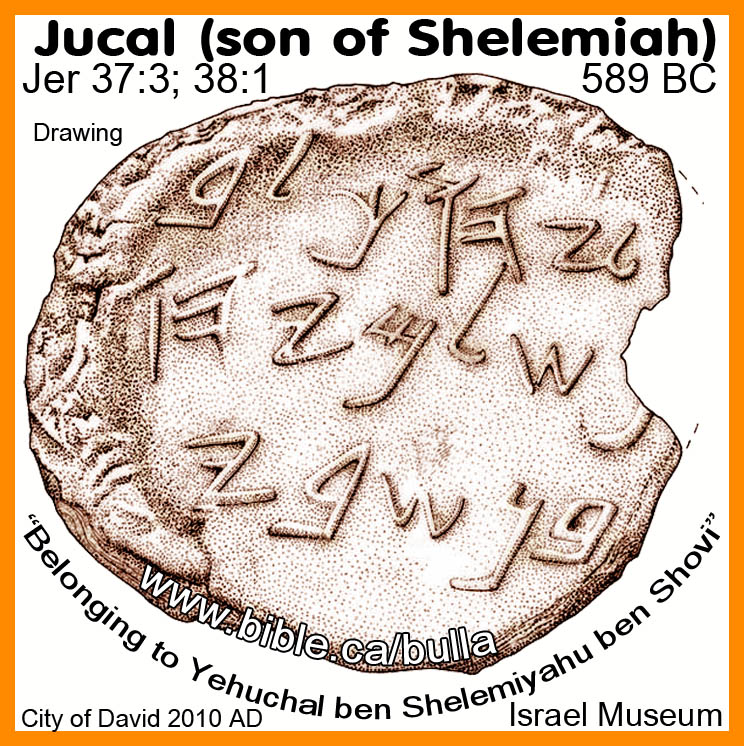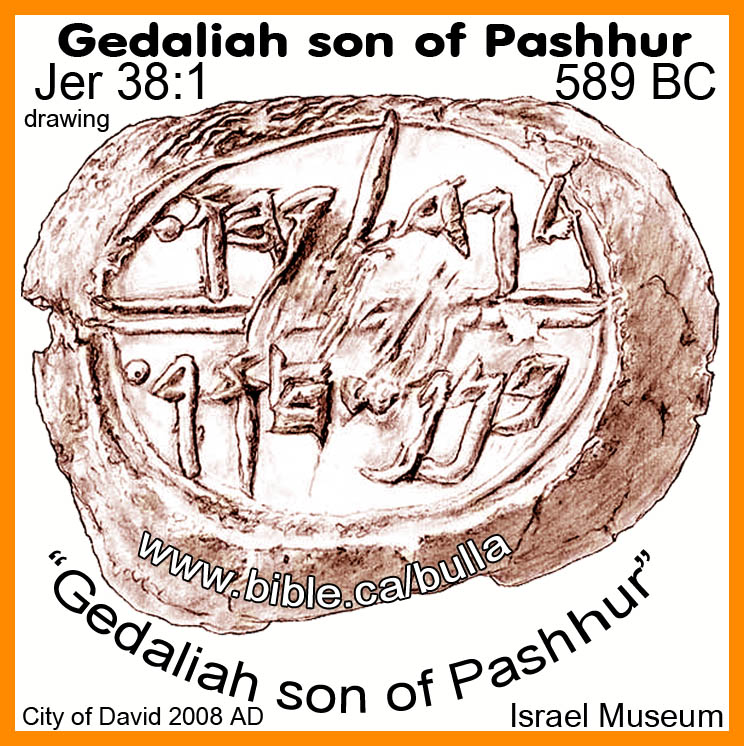Bulla of Gedaliah son of Pashhur
Bible Bullae from Israel and Judah
|
Bulla of Gedaliah son of Pashhur "Archaeologists are digging up bible stories!!!" |
|
|
||||||
|
Encyclopedia of Bullae and Seals: The Exhibit: On-line Museum of Bulla and seals Security: How bullae are made to seal papyrus Forgeries: Known fake bullae and seals |
||||||
|
|
||||||
|
Archaeologists are digging up bible stories!!! |
||||||
|
Archaeology is an important science that confirms the historical accuracy of the Bible. Since the Bible refers to hundreds of cities, kings, and places, we would expect to find evidence from on-site excavations. And this is exactly what we have found. The Bible is the most historically accurate book of history on earth. Read the Bible daily! |
|
|||||
|
|
||||||
Encyclopedia of Bullae and Seals of Judea and Israel
|
Bulla "belonging to Gedaliah son of Pashhur" |
I. Gadaliah and Jucal: Two Seals from City of David Excavation: 2008-2010 AD
|
Jucal son of Shelemyahu son of Shovi |
|
Gedaliah son of Pashhur |
1. Of all the seals featured on this page, these two are the most important because they were found in situ during and official archeological dig and were therefore fully documented and provenanced.
2. In one of the most spectacular archeological finds, Eilat Mazar found two clay seals naming two different men named in A SINGLE BIBLE VERSE!!! What is more spectacular, is that Eilat Mazar found the two clay bullae in the same archeological excavation two years apart (2008, 2010) only a few meters from each other!!!
- Both names on the two seals are found in one Bible verse: "Now Shephatiah the son of Mattan, and Gedaliah the son of Pashhur, and Jucal the son of Shelemiah, and Pashhur the son of Malchijah heard the words that Jeremiah was speaking to all the people, saying," (Jeremiah 38:1)
- These clay seals are both featured in the Israeli Museum in Israel.
- "The object that was perhaps our most startling find dates to the last period of use of the Large-Stone Structure—from the period just before the Babylonian destruction. It was a seal impression (called a bulla) that once sealed a document, which has long since disintegrated. Like bullae generally, this one is like a flattened ball of clay about the size of a fingernail. The credit for its discovery goes to the hawk eyes of Yoav Farhi, the supervisor of our Area A. He spotted it at the exact moment when the sun’s rays illuminated the letters. Without this particular lighting, you can see nothing. Even when the bulla is lit from various directions, only letter fragments are visible. Lighting from a certain specific direction, however, suddenly illuminates all of the letters as if by magic. The bulla contains three lines of ancient Hebrew script. Yoav quickly deciphered part of a name in the second line—S?LM (Shalem). I took the bulla home that night. Well into the night, when the children were asleep and the house was quiet, I began to study it. Slowly, I deciphered the name in the first line: Yehuchal. Could it be a Biblical name? I did not recall any Yehuchal in the Bible. Perhaps my reading of the name was wrong. But just to make sure I pulled from the shelf a Biblical encyclopedia. There he was, as large as life—in the book of the prophet Jeremiah: King Zedekiah sent Yehuchal (Jehucal in English Bibles) son of Shelemiah to the prophet Jeremiah to pray for the people (Jeremiah 37:3). In the following chapter, we learn that this same man, who was a royal minister, heard the decidedly unwelcome predictions of disaster coming from Jeremiah’s lips. When I opened the encyclopedia and saw the same name in the Bible as was on the bulla, I let out a shriek of surprise that rang out through the still house. Fortunately, the children slept soundly. I felt as though I had just “resurrected” someone straight out of the Bible. There is something else unusual about this bulla. It read: “Belonging to Yehuchal ben (the son of) Shelemiyahu ben Shovi.” Thus we now know the name of Yehuchal’s grandfather, as well as his father. Why did Yehuchal mention his grandfather on his seal? This was hardly the standard practice. Perhaps his grandfather was a distinguished, well-known figure in his own right. In Yigal Shiloh’s excavation in the 1980s, adjacent to our site, he found 45 bullae in the destruction layer of one of the rooms. But none of the bullae Shiloh excavated mentions the grandfather, only the father." (Did I Find King David’s Palace?, Eilat Mazar, BAR, 2012)
By Steve Rudd: Contact the author for comments, input or corrections.
